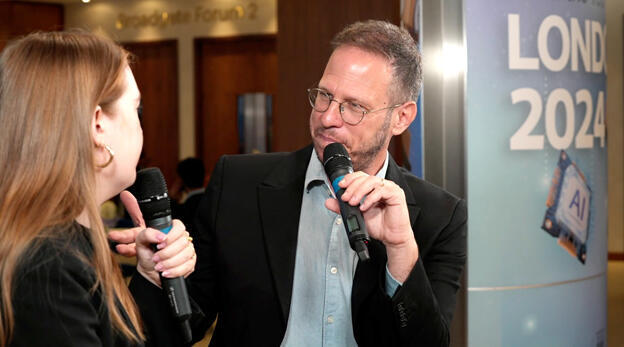
CTalk
"Creativity is essential in entrepreneurship and technology"
Dr. Jonathan Reiner, Senior Neurologist, Head of Neuromodulation and Deep Brain Stimulation Service at Beilinson hospital, explores the connection between neurology and innovation.
Dr. Jonathan Reiner - Mind the Tech London
(Simul Europe)
"Creativity is an essential quality not only in art but also in entrepreneurship and technological development. The more we understand the brain functions behind creativity, the more we can detect creative abilities in people, perhaps even at an early stage. In the future, if we can identify individuals with unique skills based on brain activity, we may be able to promote innovation more effectively," said Dr. Jonathan Reiner, Senior Neurologist, Head of Neuromodulation and Deep Brain Stimulation Service at Beilinson hospital, in an interview with CTech as part of the Mind the Tech London 2024 conference hosted by Calcalist and Bank Leumi.
During the interview, Dr. Reiner presented his research on the relationship between creativity and brain function, using fMRI technology, and emphasized the importance of creativity not only in art but also in business and technology.
According to Reiner, who runs a clinic specializing in deep brain stimulation for patients with neurological disorders such as Parkinson's, "My clinical experiences led me to investigate the connection between creativity and health. I discovered that some Parkinson's patients, for example, develop a creative drive that wasn’t present before. Their symptoms improve when they engage in creative activities—some begin to draw, write, or pursue artistic endeavors almost compulsively. This made me wonder if creativity can be harnessed to improve patients' health."
"When I moved on to research the creative mind, I realized that most studies focus on creative thinking, but visual creativity is underexplored. So, in recent years, we have scanned artists while they paint using fMRI technology. The fMRI scanner displays brain activity in real time, allowing us to see which areas of the brain are active during the creative process. This enabled us to identify the brain networks involved in creativity," Reiner explained in the interview.
What did you learn about the neurological functions of creativity?
"We learned that creativity requires cooperation between two central brain networks. The first is the default mode network, which is involved in introspective thinking and imagining the future. It allows us to think freely and non-judgmentally, generating new ideas. The second is the executive control network, which reviews these ideas and helps make them practical. The correct combination of these two networks is key to creativity—starting with finding associations between distant ideas and moving them toward execution."
How can this knowledge help encourage innovation and creativity, for example, in the business world?
"Creativity is an essential quality not only in art but also in entrepreneurship and technological development. The more we understand the brain functions behind creativity, the better we can detect creative abilities in people, potentially even early on. In the future, we may be able to scan the brains of job candidates for roles that require creative thinking to identify potential entrepreneurs or innovation leaders. It may sound like science fiction, but it’s not that far from reality."
Do you think brain imaging could replace the traditional recruitment process?
"I understand that this idea may deter some people, but the combination of neurological data and professional assessment could become a useful tool in the future. If we can identify individuals with unique skills based on brain activity, we may be able to promote innovation more effectively. Moreover, in my work as a neurologist, we already use electrodes in the brain to change behaviors in patients with neurological disorders. It’s possible that in the future, we could use similar technologies to enhance cognitive functions, such as creativity, in people who aren’t considered 'naturally creative.'"















